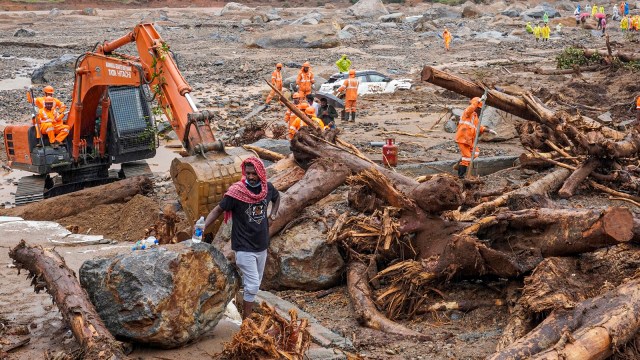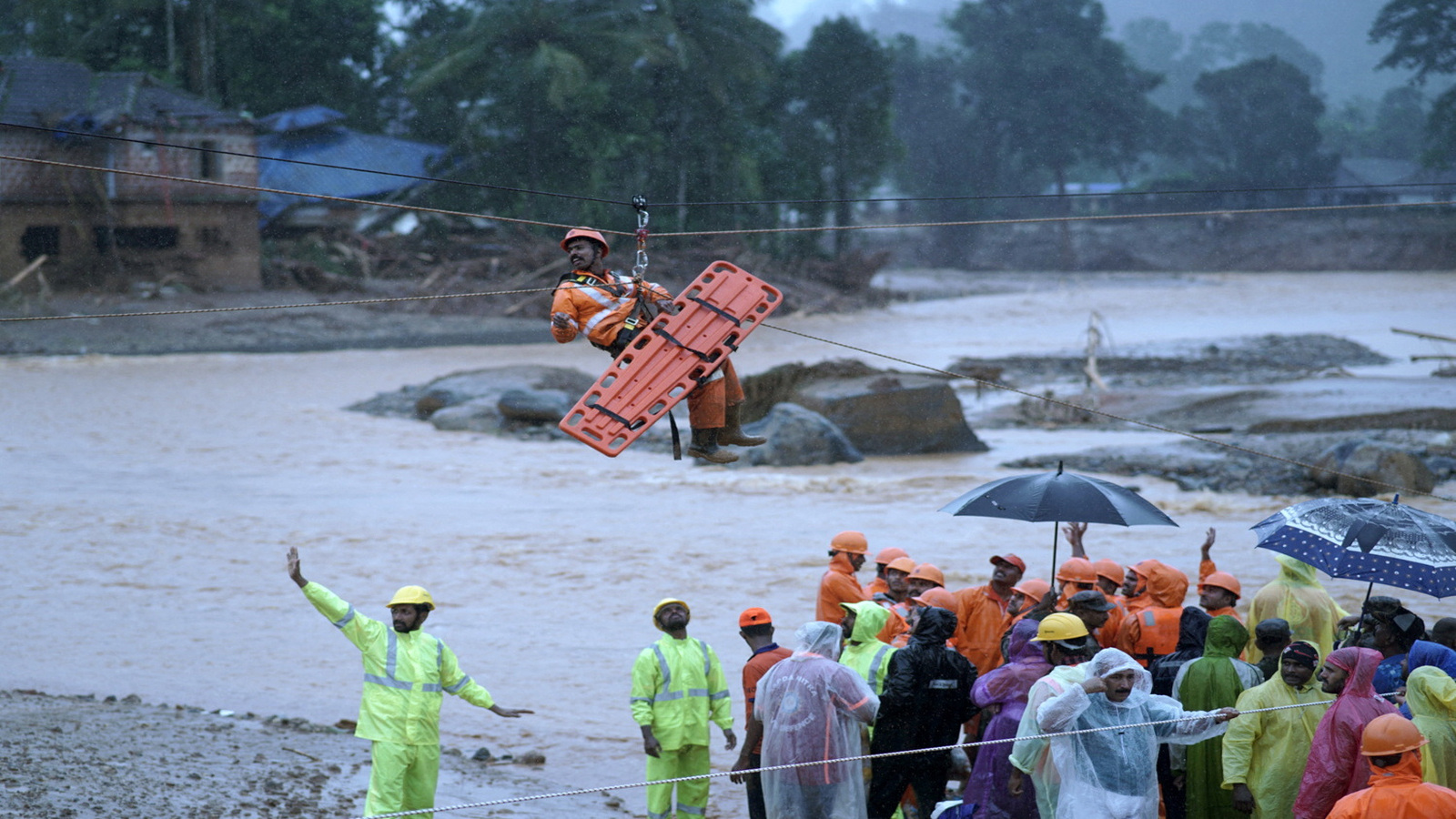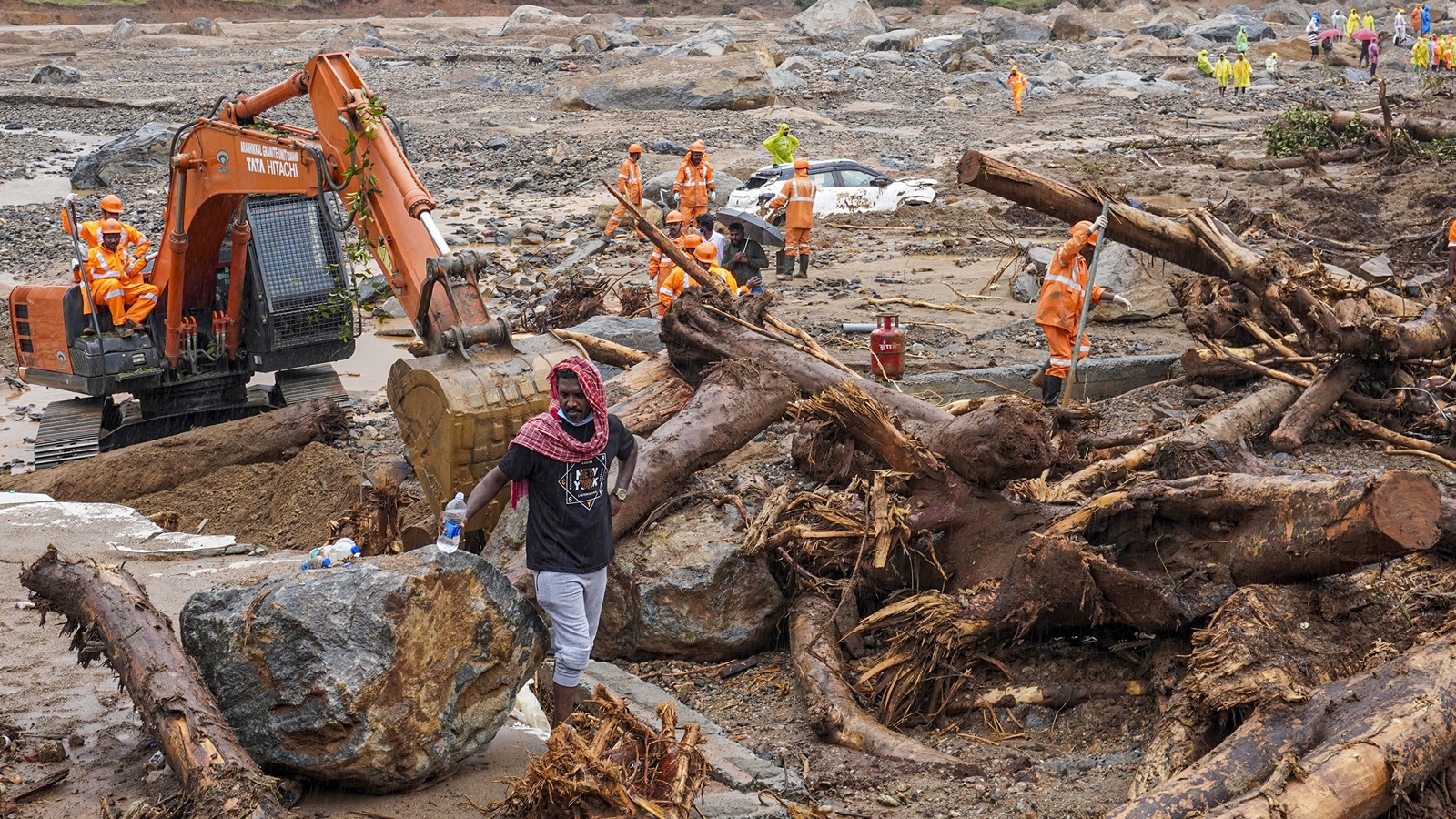
Written by Madhav Gadgil
On the early morning of July 30, the serene hills of Meppadi in Kerala’s Wayanad district were violently transformed by a series of catastrophic landslides. In a matter of moments, entire villages — Mundakkai, Chooralmala, Attamala, and Noolpuzha —were buried under massive debris. The toll is staggering: At least 300 lives have been lost, and countless more remain missing. Rescuers face blocked roads, unstable ground, and ongoing threats from the fragile terrain.
This a tragedy that exposes the terrible chasm in Indian society between the haves and the have-nots. Mundakkai is just three kilometres away from Puthumala, the scene of a very similar disaster in 2019. I could personally visit and inspect what had been happening on that occasion. After driving for over an hour in heavy rain, we started climbing the hills of Wayanad on a winding road. The steep slopes were dotted with tall buildings and land that had been levelled for tea plantations. Throughout, the roads were covered with mud from the landslides from the road cuts. The river of mud from the landslide had wound its way down a gorge for a kilometre and a half, with several shorter mud tributaries augmenting it along the way. Several feet of mud had completely buried the 55 houses of the tea-estate labourers located at the bottom of the gorge, a site utterly unsuitable for human habitation. This river of mud had left no trace of the eucalyptus plantations in its ruthless march, but one tree stood proud and erect on its route: It was Ficus beddomei, characteristic of the original vegetation. This clearly brought out the fact that the replacement of the original natural tree cover by exotics like eucalyptus had contributed to this disaster.
The story of tea planters and the labourers forced to live in the gorges tells us much about the history of forest and land management in India when the British tightened their grip. They had the challenge of managing, or rather, draining the country that was described as an ocean of trees in early British travelogues. A major question confronting the foresters was the extent to which village communities should continue to manage forests, and how much should be taken over as state property. Many British officials favoured a key role for local communities. Shifting cultivation was a major bone of contention. At that time, it was widely prevalent. People cultivated millets for two or three years after clearing much of the tree growth while leaving economically important trees intact and burning the brushwood. They then moved to another patch, leaving the land fallow for 15 to 20 years, allowing the tree cover to grow back. The British tea- and coffee-estate owners opposed the continuation of shifting cultivation because unless it was forcibly stopped, they would never get any labour for their estates. These estate owners wanted labour that would be made to work pretty much like slaves; after all, their kin in North America were prospering by exploiting huge armies of Black slaves on cotton plantations.
Overall, the economic interests of the British lay in rendering people resourceless, and dedicating forest tracts to tea and coffee plantations owned by their compatriots and growing timber for their military and construction needs.

The Western Ghats Ecology Expert Panel (WGEEP) took on board this historical background and painted a realistic picture of what was happening in India. The theme of our report was that any nation, including India, may be viewed as harbouring four capital stocks, namely, natural (water, vegetation, biodiversity, agricultural, animal husbandry, fish production), social (cooperative behaviour, sense of security), human (education, health, employability) and man-made capital. India is exclusively focused on building up highly subsidised man-made capital at serious costs to natural, human and social capitals, worsening economic, social, educational and health disparities and thereby depressing overall social welfare as well as the ability of our industrial enterprises to compete internationally. This is leading to increasing frequency and intensity of human interventions such as mines and quarries, roads, and buildings on hill slopes everywhere, including in ecologically highly sensitive regions.
The only way to bring these unfortunate trends under check would be to follow the WGEEP’s carefully drafted guidelines for regulation as well as the promotion of developmental activities graded with respect to zones with three different levels of ecological sensitivity — high, moderate and low. The WGEEP guidelines are not presented as final, rigid prescriptions but are meant to initiate a bottom-up process of democratic decision-making, beginning with the gram sabhas and mohalla sabhas.
Governments set the WGEEP’s proposals aside since they have no interest in protecting nature and empowering people. This 13-year delay in acting on the WGEEP’s suggestions is impacting the region more and more adversely, resulting in an increasing frequency of floods and landslides. A careful study of landslides at all scales in the Maharashtra Western Ghats has shown that their frequency has gone up 100-fold between 2011 and 2020 along with increasing levels of human interventions. It is high time we begin to take stringent actions to protect nature and empower institutions of decentralised democracy to turn the tide. Kerala is the country’s most literate state and has a notable tradition of empowering people that led to the People’s Planning Campaign of 1995-96. As WGEEP pleads, it is high time that we revive that spirit.
The writer is an ecologist and chairman of the Western Ghats Ecology Experts Panel



